On Teaching
Here we find a teaching portfolio in the form of a database - a repository of work advanced in studio and seminar courses instructed by Kyle Steinfeld at UC Berkeley.
To browse this document as a repository, please follow this link for an overview of the contained work. To be led through a reflection on the material included, and on my approach to teaching and student learning, read on.
I primarily teach two types of courses in the Department of Architecture: core courses in design and architectural representation, and topical research studios and seminars in Design Computation. In addition to formal course instruction, I often serve as advisor of theses and dissertations for students both within the Department and in the broader University.
Let's take each of these types in turn.
Core Courses
Regarding the former category of courses, I have organized a significant portion of the first semester of the MArch option three program, through teaching both the Introduction to Design studio course and the seminar Representational Practice in Architectural Design. These two courses, so tightly related that I list them together here, comprise two-thirds of the required credits in this critical first semester of the graduate program. Through this teaching, I have sought to apply principles concerning the relationship between design and digital representation to the core design curriculum. Central to this aim is the cultivation of an understanding of the foundational discourse and the diversity of approaches to architectural representation, with an emphasis on digital formats. Through a thorough unpacking of the mechanics of design software, I hope to assist students in developing a fluency in the canonical digital methods found in architectural practice, and thereby begin the development of a personal and critical relationship to digital modeling and drawing.
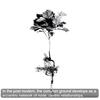
Introduction to Design- This pairing - an introductory graduate studio and a related seminar on representation and digital media - present core concepts in architectural design and prepare incoming graduate students for the Master of Architecture program.
- 2687 documented graphics in 37 projects completed from Fall 2011 - Fall 2018
Advanced Studios and Seminars
In the latter category of courses, I have introduced advanced topics in the application of computation to architectural design through studio and seminar work. These courses are very often directly related to the development of experimental design software, and offer students an opportunity to participate in the critical discourses surrounding the application of computational methods to address some of the most urgent issues facing the discipline.
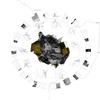
Constructing Vision- This advanced undergraduate option studio explores the notion of the 'visual construct' in architectural design.
- 54 documented graphics in 2 projects completed in the Spring of 2011
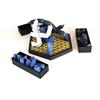
The Data Made Me Do It- Advanced graduate studio that explores emerging methods that supplant traditional models of design, and suggest a new form of authorship characterized by distributed agency and co-authorship.
- 238 documented graphics in 3 projects completed in the Spring of 2014
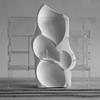
Significant Others- This studio grapples with problems related to the integration of physical and digital form-finding techniques into creative architectural design. Embracing the schema of the formal design experiment, this studio seeks to resolve the authoritative voice that is so often bestowed upon the results of form-finding processes with the traditional authorial voice of the designer. We do so through a series of formal material experiments that undermine the uncompromising and imperative voice, and replace it with one of a range of potential alternative voices: double, foil, doppleganger, collaborator, trickster, confederate, and enemy.
- 312 documented graphics in 4 projects completed in the Spring of 2017
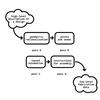
Studio One- A one-year post-professional design studio for those who wish to continue to explore advanced design issues in an experimental studio setting. The year-long studio is the core of the program, and is integrated with seminars in design theory, digital applications, and building technology.
- 646 documented graphics in 17 projects completed from Fall 2014 - Spring 2015
Theses and Dissertations
Guiding students through an engagement with the most urgent issues concerning digital design in the field today is an important part of my role as an advisor of theses and dissertations. While a selection of Master of Architecture thesis projects for which I have served as an advisor have been documented here, and may be found at the link below, a comprehensive list of students for whom I have served as advisor may be found in my curriculum vitae.
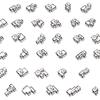
Thesis Projects- A selection of theses and dissertations for which I have served as an adviser.
- 180 documented graphics in 8 projects completed from Spring 2012 - Spring 2017
Teaching Philosophy
While the science of applied computation and the study of design cognition are tightly entwined, and have enjoyed a long and mutually beneficial relationship, the widespread adoption of computational methods in the practice of architecture is a relatively recent development.
Early reactions in the discipline of architecture to the now widespread acceptance of digital technologies in the design studio tended to be highly polarized, alternatively and at times simultaneously, full of enthusiasm and dread. As this "crisis of the digital" swelled in the mid 2000's a new subject area emerged, distinct from both applied computer science and from cognitive approaches to understanding the actions of designers. Alternatively referred to as "Digital Design", "Design Computing" or "Design and Computation", this line of inquiry is marked by a concern with a set of questions unique to the application of computational methods to the creative practice of architectural design.
As the intensity of the crisis receded, and academic positions and professional research groups devoted to the topic proliferated, yet another landscape of digital design research emerged in its wake - a landscape both less marked by the adoption of polemical positions, and less easily accounted for by the categorical divisions of the former model. As Design Computation has been more widely recognized, it has become clear that new methods of study are required. Increasingly, leaders in this field, particularly those that came of age during the heat of the initial crisis, tend to define their work across boundaries, and to operate through simultaneous activities of experimental design, argumentation and theorization, and the development of innovative methods. These methods may be developed and disseminated via experimental design projects and professional workshops, but also may be encapsulated by free and open-source software (FOSS) authored by design researchers with highly specific use-cases in mind.
It is within this context that my work as an instructor is situated.